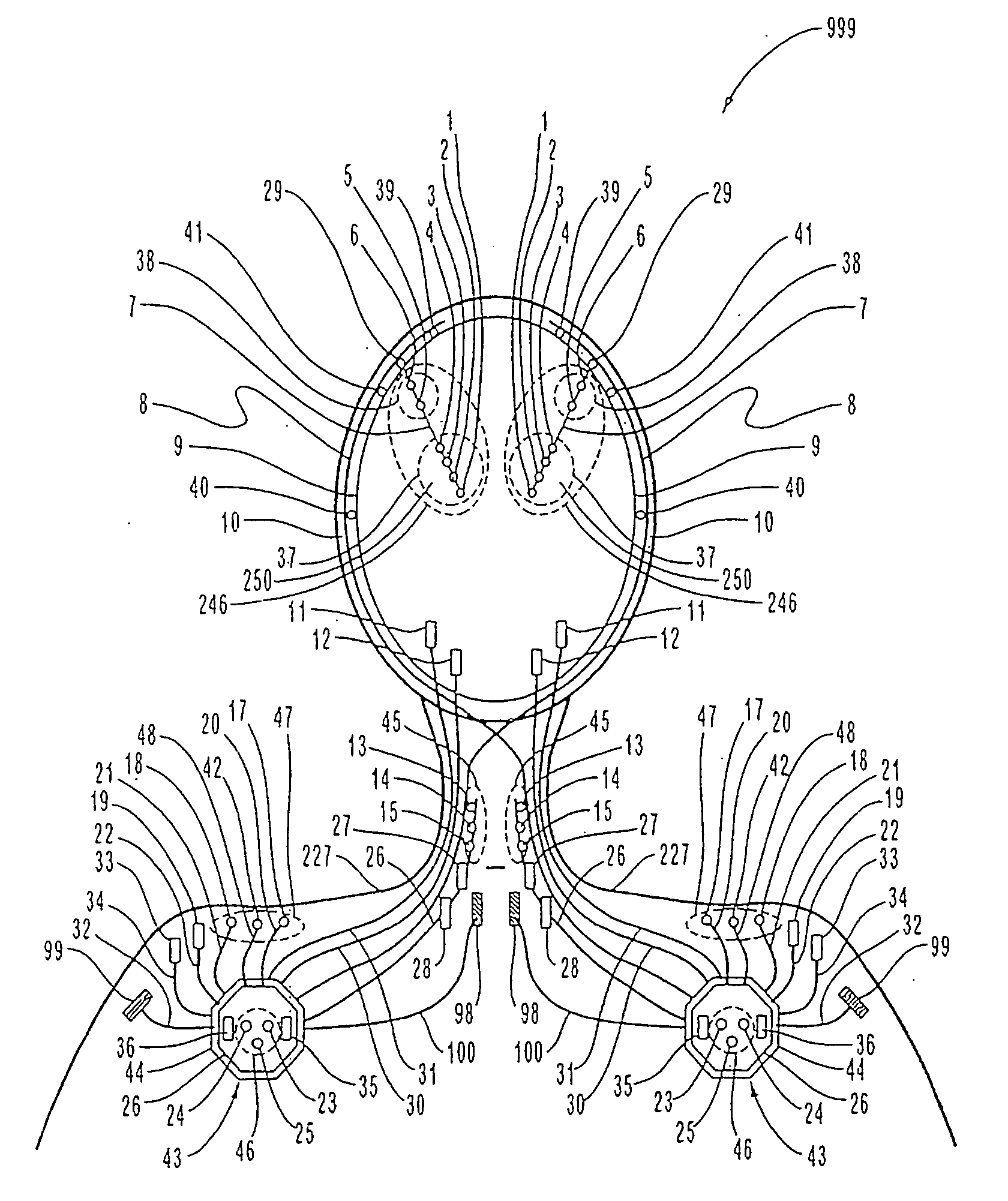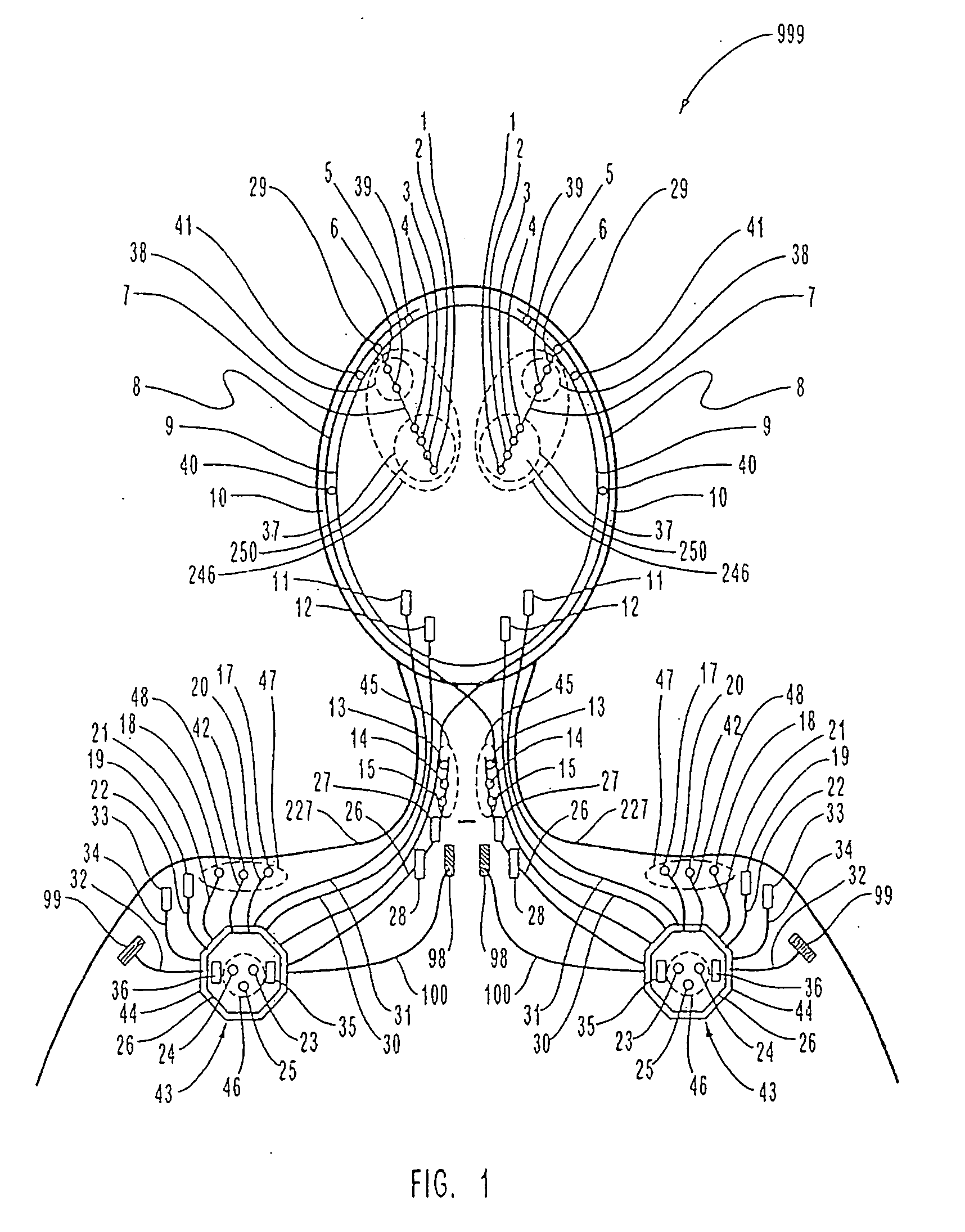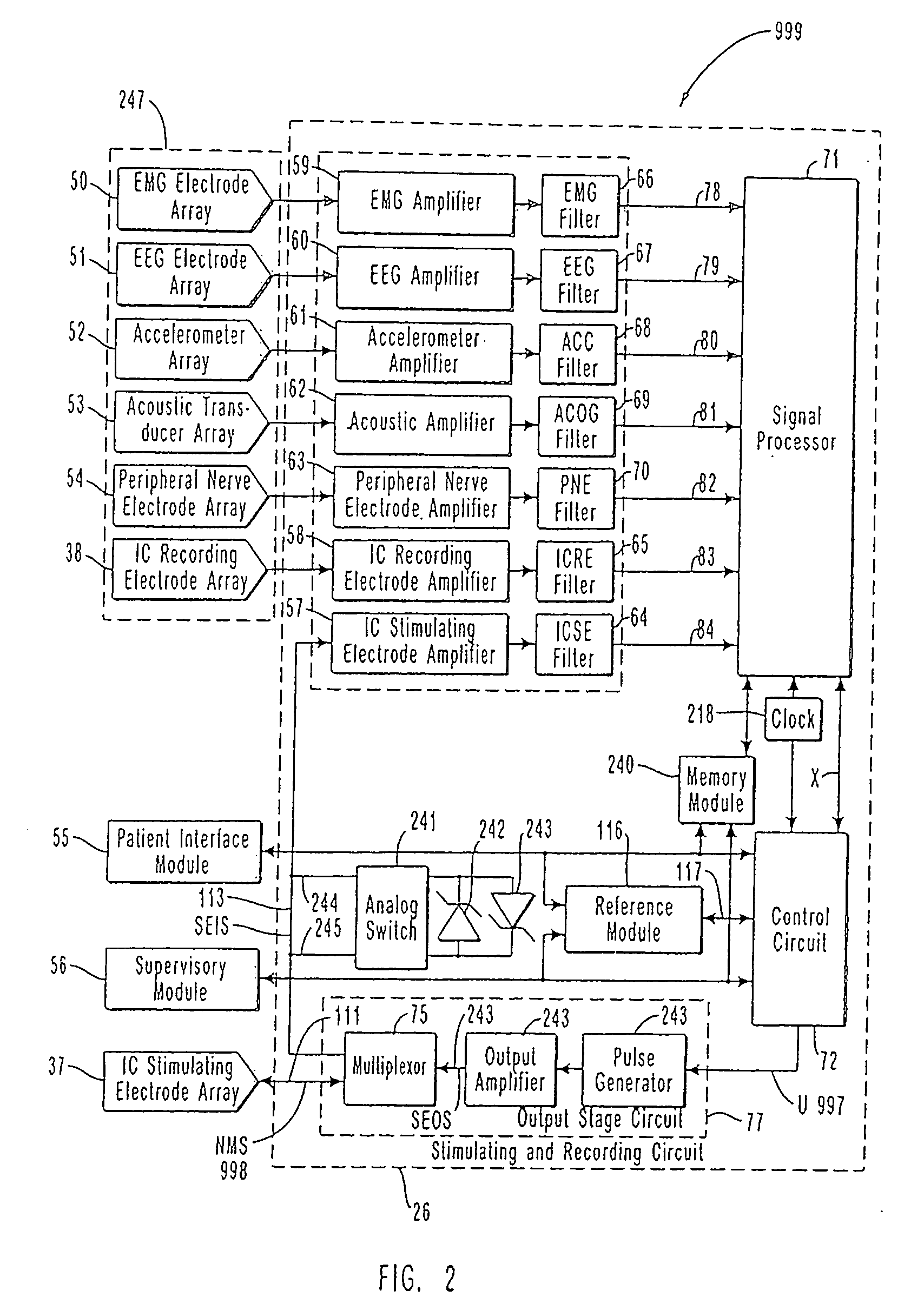Methods and systems for continuous EEG monitoring
a technology of eeg and monitoring system, applied in the field of neurologic diseases, can solve the problems of moderate efficacy, procedures suffer from a number of fundamental limitations, and can not be used in moderately effective procedures, and achieve the effect of facilitating real-time monitoring of eeg signals
- Summary
- Abstract
- Description
- Claims
- Application Information
AI Technical Summary
Benefits of technology
Problems solved by technology
Method used
Image
Examples
Embodiment Construction
[0102]FIG. 1 is a schematic diagram of one embodiment of the intracranial stimulator of the present invention implanted bilaterally in a human patient. In the embodiment illustrated in FIG. 1, two neurological control systems 999 are shown implanted bilaterally. Each system 999 includes a stimulating and recording unit 26 and one or more intracranial components described below. As described in this illustrative embodiment, the intracranial components preferably include a stimulating electrode array 37. However, it should become apparent to those of ordinary skill in the relevant art after reading the present disclosure that the stimulating electrodes may also be extracranial; that is, attached to a peripheral nerve in addition to or in place of being located within the cranium. As shown in FIG. 1, stimulating and recording unit 26 of each neurological control system 999 is preferably implanted contralateral to the intracranial components of the device.
[0103] As one skilled in the r...
PUM
 Login to View More
Login to View More Abstract
Description
Claims
Application Information
 Login to View More
Login to View More - R&D
- Intellectual Property
- Life Sciences
- Materials
- Tech Scout
- Unparalleled Data Quality
- Higher Quality Content
- 60% Fewer Hallucinations
Browse by: Latest US Patents, China's latest patents, Technical Efficacy Thesaurus, Application Domain, Technology Topic, Popular Technical Reports.
© 2025 PatSnap. All rights reserved.Legal|Privacy policy|Modern Slavery Act Transparency Statement|Sitemap|About US| Contact US: help@patsnap.com



